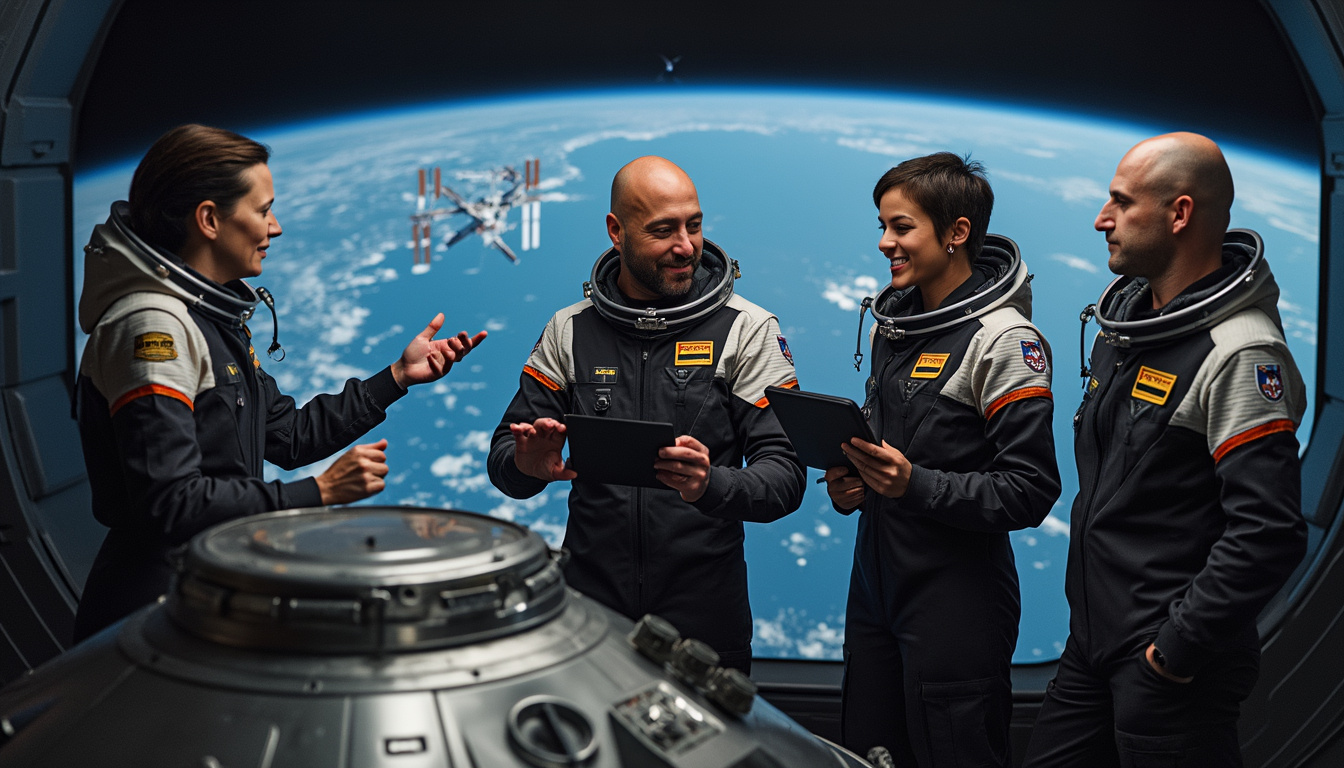After months spent conducting cutting-edge research aboard the International Space Station, NASA’s SpaceX Crew-9 has triumphantly returned to Earth. The crew, consisting of NASA astronauts Nick Hague, Suni Williams, and Butch Wilmore, along with Roscosmos cosmonaut Aleksandr Gorbunov, splashed down on March 18, 2025. A pod of dolphins greeted their arrival near Tallahassee, Florida, marking a spectacular conclusion to their remarkable journey. The astronauts not only engaged in scientific exploration but also made history as part of Boeing’s first crewed flight test aboard the Starliner spacecraft. This mission has opened exciting new possibilities for future space ventures and highlighted the collaborative spirit of human spaceflight.
During their time in space, Crew-9 embarked on over 150 unique experiments, logging more than 900 hours of research aimed at understanding the effects of microgravity. The mission prompted significant advancements in various fields, including plant growth, stem cell technology, and materials science, critical elements for deep space exploration. Their efforts reflect the resilience and ingenuity that lie at the core of NASA’s ambitions.
The Journey of Crew-9: Mission Overview
NASA’s Crew-9 mission was an extraordinary venture that encapsulated the essence of teamwork and scientific inquiry. Launched aboard a SpaceX Falcon 9 rocket from Cape Canaveral Space Force Station on September 28, 2024, the international crew faced the challenges of space with determination and commitment. Their mission was multifaceted, encompassing rigorous experiments, maintenance, and even the introduction of education through outreach initiatives. As part of this journey, the astronauts performed two critical spacewalks early in 2025, showcasing their expertise and teamwork.

Scientific Endeavors in Space
The cornerstone of Crew-9’s mission was its extensive scientific portfolio. With a focus on research and discovery, the astronauts conducted experiments designed to harness the nuances of microgravity. Among these, studies on plant growth aimed at enhancing agricultural practices on Earth. The research team explored the growth patterns of various plant species, seeking to understand how microgravity affects their development.
Another vital aspect of their work revolved around stem cell technology aimed at improving patient care. By investigating how microgravity can influence stem cells, Crew-9 contributed valuable insights that could potentially revolutionize treatments for numerous diseases.
Additionally, the crew investigated the behavior of various materials in space, an essential dimension of understanding how to design equipment and systems for long-duration missions beyond low Earth orbit. The knowledge gained through these experiments is invaluable as humanity embarks on future deep-space exploration endeavors.
Spacewalks and Maintenance Duties
The Crew-9 astronauts also executed two significant spacewalks, which involved crucial maintenance and upgrades to the International Space Station. These walks were anything but routine; they included removing an antenna assembly, collecting samples, and applying patches to vital equipment. Suni Williams earned recognition during this period, setting a new record for the most cumulative spacewalk time by a woman.
Completing these tasks requires not only extensive training but also a deep trust in one another. The camaraderie among the Crew-9 members allowed them to handle unexpected challenges effectively, further showcasing the resilience required for successful space missions.
Challenges and Triumphs of the Crew
The path to return to Earth was not without challenges. The Crew-9 mission experienced technical complications, particularly relating to the Starliner spacecraft. These challenges extended their time in orbit, complicating the timeline for their return. Despite this, both Wilmore and Williams expressed their willingness to face these hurdles again, demonstrating their commitment to advancing human exploration.

Personal Experiences and Reflections
The experiences were not just technical achievements; they were deeply personal journeys for the astronauts involved. Williams and Wilmore both reflected on the significance of their time in space. Wilmore emphasized the value of teamwork, stating that collaboration underpins the success of human spaceflight endeavors. His passion for inspiring future generations resonated as he encouraged young people to remain resilient and committed to their goals.
Suni Williams brought her adventurous spirit to the mission, emphasizing the limitless potential of human imagination. She described her experience of running the Boston Marathon in space not once but twice, embodying the essence of pushing boundaries. Her dedication to science and exploration remains a beacon of inspiration for aspiring astronauts.
Collaborative Efforts in Space Exploration
In a world where collaboration is key, the Crew-9 mission exemplified how international partnerships can lead to groundbreaking discoveries. The synchrony between NASA’s goals and those of private companies—such as SpaceX, Boeing, and others like Blue Origin and Northrop Grumman—has paved the way for innovative approaches to space travel.
Through initiatives like the Artemis program and the utilization of vehicles such as the Boeing CST-100 Starliner, the landscape of space exploration is shifting. Lockheed Martin’s contributions, along with the efforts of companies like Axiom Space and Rocket Lab, provide an exciting backdrop for the future of crewed spaceflight.
Celebrating the Return to Earth
After completing their mission, the Crew-9 members were greeted with applause and excitement upon their return to the Johnson Space Center in Houston. Their homecoming culminated in a heartfelt exchange with friends, family, and fellow astronauts; an emotional reminder of the support systems that lie behind every successful mission.
Crew-9’s Legacy for Future Missions
The tireless efforts put forth during the Crew-9 mission have set a precedent for future missions. Their research findings and insights form a foundation for advancing human spaceflight and provide the basis for missions beyond low Earth orbit.
Women like Suni Williams are paving the way for more inclusive representation within aerospace—a sector traditionally dominated by men. With every accomplished spacewalk, the barriers are reduced, offering a profound impact on future missions and explorers.
This legacy encourages a cross-disciplinary approach, integrating science, engineering, and education. As companies like Virgin Galactic and Astrobotic strive to expand the horizons of commercial space travel, Crew-9’s contributions will inspire the next generation of space pioneers.
The Road Ahead
The work of Crew-9 is far from over; it continues to echo throughout the vast expanse of space exploration. With ongoing missions planned and the partnerships established through this flight, the horizons are continually expanding. Upcoming initiatives, including missions conducted by NASA’s SpaceX Crew-11, promise to build upon the successes of Crew-9.
A newfound enthusiasm for space travel is palpable, not only from astronauts involved but also from the young minds observing their journeys. Educators promote project-based learning inspired by space exploration, and initiatives prioritizing STEM fields lay the groundwork for innovative solutions to future challenges.
The experience gained from Crew-9, both in triumphs and challenges, offers lessons vital for the ambitious goals set forth in future exploration. Their journey underlines that human tenacity, the spirit of collaboration, and dedication to scientific discovery will continue to propel humanity toward the stars.
As Crew-9 members embark on their next chapters, their mission leaves an indelible mark not just on the records of NASA but upon the dreams of a whole generation. Each achievement carries the weight of aspiration, undeniably shaping the future of human spaceflight.




Leave a Reply